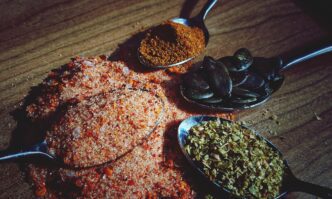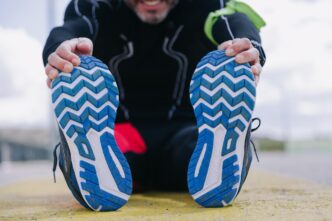The “afterburn effect” is a compelling fitness concept suggesting that your body continues to burn calories at an elevated rate long after you’ve finished your workout, but separating the scientific reality from marketing hype is crucial for anyone looking to optimize their health. This phenomenon, known scientifically as Excess Post-exercise Oxygen Consumption (EPOC), refers to the measurable increase in your metabolic rate that occurs as your body works to recover and return to its pre-exercise state, or homeostasis. While every form of exercise elicits some degree of EPOC, it is the intensity of the workout, not its duration, that primarily dictates the magnitude and longevity of this afterburn, making high-intensity interval training (HIIT) and heavy resistance training the most effective methods for maximizing this metabolic boost.
What Exactly is the Afterburn Effect?
At its core, the afterburn effect is your body’s recovery process put into metabolic overdrive. Think of it as a physiological debt that you incur during intense exercise, which you must then repay in the hours that follow.
During a strenuous workout, your body’s demand for energy skyrockets. To meet this demand, you breathe harder and your heart pumps faster to deliver oxygen to your working muscles. When the intensity is high enough, however, your oxygen consumption cannot keep up with the immediate energy demand, creating what is known as an “oxygen deficit.”
Once you stop exercising, your body doesn’t just flip a switch and return to its resting state. Instead, it begins the hard work of recovery, and this work requires energy—and oxygen. This is EPOC: the volume of oxygen your body consumes above its normal resting value to handle the post-workout cleanup and repair.
The Science of EPOC: Paying an Oxygen Debt
Several physiological processes contribute to the elevated calorie burn during the EPOC period. Your body isn’t just idly waiting; it’s actively working to restore balance across multiple systems.
First, it must replenish its immediate energy stores. This involves resynthesizing adenosine triphosphate (ATP) and phosphocreatine (PC), the high-energy molecules that fuel short, explosive bursts of effort. This process is energy-dependent and requires oxygen.
Next, your body works to clear metabolic byproducts, such as lactate, from the muscles and blood. While once blamed for muscle soreness, we now understand lactate is actually a valuable fuel source that can be converted back into glucose by the liver in a process that consumes energy.
Your body also works to restore oxygen levels in the blood and muscle tissues, specifically reloading myoglobin and hemoglobin. Furthermore, your heart rate and breathing remain elevated for a period post-exercise to aid these processes, which itself burns more calories than when you are at rest.
Finally, intense exercise significantly increases your core body temperature. Your body must expend energy to cool down and return to its normal temperature, contributing further to the total calorie burn of EPOC.
Fact vs. Fiction: Debunking Common Myths
The concept of EPOC is often exaggerated in fitness marketing, leading to unrealistic expectations. Understanding the facts is key to leveraging this phenomenon effectively without falling for the hype.
Myth: The Afterburn Effect Torches Hundreds of Extra Calories
This is the most pervasive myth surrounding EPOC. While some programs promise a 48-hour metabolic furnace, scientific research paints a more modest picture. The calorie burn from EPOC is real, but it’s not a magic bullet for weight loss.
Most studies show that the afterburn effect typically accounts for an additional 6% to 15% of the total calories burned during the exercise session itself. For example, if you burn 400 calories in a grueling HIIT workout, you might burn an extra 24 to 60 calories from EPOC in the hours that follow. While every calorie counts, it’s a far cry from the hundreds often advertised.
Fact: High-Intensity Exercise Maximizes EPOC
This is the central truth of the afterburn effect. The primary driver of EPOC is exercise intensity. The harder you push your body and the further you move it from its state of homeostasis, the more work it has to do to recover, resulting in a larger and longer-lasting EPOC.
High-Intensity Interval Training (HIIT), which involves short bursts of all-out effort followed by brief recovery periods, is exceptionally effective at triggering a significant EPOC. Similarly, heavy resistance training that involves compound movements and challenges your muscles to near-failure creates substantial metabolic disturbance and muscle micro-trauma, both of which require significant energy to repair post-workout.
Myth: Any Workout Will Give You a Huge Afterburn
While technically all exercise results in some level of EPOC, its magnitude can be negligible. A low-intensity, steady-state activity like a 30-minute walk or a gentle yoga class will have a very small and short-lived afterburn effect.
Your body is highly efficient. If an activity doesn’t significantly challenge your cardiorespiratory system or muscular strength, the recovery process is quick and metabolically inexpensive. The afterburn is a response to intense stress, not just movement.
Fact: EPOC Contributes to Long-Term Fat Loss
While a single session’s afterburn might be small, its cumulative effect over time is meaningful. Think of it as earning compound interest on your fitness efforts. An extra 50 calories burned after every workout, three times a week, adds up to 150 extra calories per week, or 7,800 extra calories per year—equivalent to over two pounds of fat.
When combined with the significant calorie burn during the workout itself and the other benefits of intense exercise (like building metabolism-boosting muscle), EPOC becomes a valuable component of a comprehensive fat-loss strategy.
How to Maximize the Afterburn Effect in Your Workouts
To truly harness the power of EPOC, you need to structure your workouts around intensity. This doesn’t mean every workout has to be an all-out battle, but strategically incorporating high-intensity sessions is key.
Embrace High-Intensity Interval Training (HIIT)
HIIT is the gold standard for generating EPOC. The goal is to push your heart rate close to its maximum during the work intervals. This can be applied to almost any cardio modality.
Examples include treadmill sprints (30 seconds of sprinting, 60 seconds of walking), stationary bike intervals (20 seconds of all-out pedaling, 40 seconds of easy pedaling), or bodyweight circuits (alternating burpees, high knees, and jump squats with short rests). The key is the dramatic fluctuation between extreme effort and recovery.
Prioritize Compound Strength Training
Lifting heavy weights, particularly with exercises that engage multiple large muscle groups, is a potent stimulus for EPOC. Compound movements like squats, deadlifts, bench presses, overhead presses, and rows create a massive metabolic demand.
Focus on lifting a weight that is challenging for you in the 6-12 repetition range. Minimizing rest periods between sets (e.g., 60-90 seconds) can also enhance the metabolic effect by keeping your heart rate elevated, blending cardiovascular stress with muscular work.
Combine Strength and Cardio
Metabolic resistance training is a hybrid approach that delivers a powerful one-two punch for EPOC. This involves performing a series of strength exercises back-to-back with minimal to no rest, creating a circuit.
A simple complex could involve performing 8 repetitions of a dumbbell row, followed immediately by 8 reps of a goblet squat, then 8 reps of a push-up, and finally 8 reps of a dumbbell push press. After completing the circuit, you would rest for a minute or two before repeating. This style of training builds muscle and strength while simultaneously taxing your cardiovascular system, leading to a robust afterburn.
Putting EPOC in Perspective: A Balanced View
While maximizing EPOC is a great goal, it’s important to place it within the broader context of a healthy and sustainable lifestyle. It is one tool in your toolbox, not the entire solution.
Focus on the Workout, Not Just the Afterburn
Remember that the number of calories you burn during your workout will always be significantly greater than the number you burn from EPOC. The primary benefit of a HIIT session is the incredible cardiovascular and metabolic adaptations it stimulates and the calories expended in the moment. The afterburn is a welcome bonus, not the main event.
Consistency is King
A single intense workout will not transform your body. The real magic happens through consistency. Building a routine that includes 2-3 high-intensity sessions per week, balanced with lower-intensity activity and rest days, will yield far greater results over the long term than chasing a maximal afterburn in one-off, heroic efforts.
Listen to Your Body
High-intensity training is, by definition, highly demanding. It places significant stress on your muscles, joints, and nervous system. Pushing too hard, too often, without adequate recovery is a fast track to burnout, overtraining, and injury. Prioritize sleep, nutrition, and active recovery to ensure your body can handle the demands you place on it.
Ultimately, the afterburn effect is a real, science-backed benefit of intense exercise that can modestly contribute to your overall energy expenditure and long-term fitness goals. Rather than viewing it as a shortcut, see it as a reward for hard work. By strategically incorporating high-intensity training into a balanced fitness plan, you not only build a stronger, fitter body but also optimize your metabolism to keep working for you, even after you’ve left the gym.








